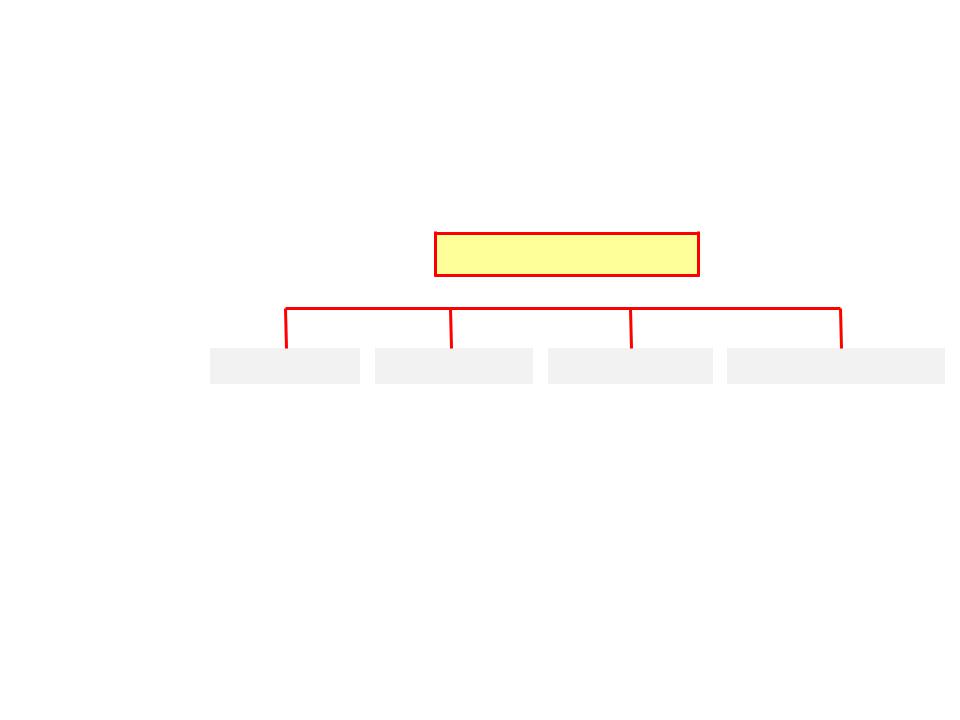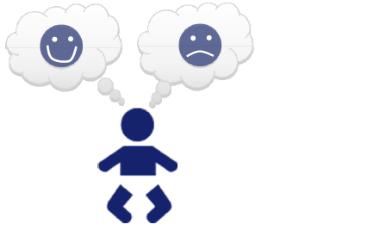
Mini-course 1 Decision Analysis (Dr. Mariya Sodenkamp) / Class 5 / ITB_L5_ 2015_04_27
.pdf
Medical / Healthcare:  Hierarchy for selection of candidate for organ transplantation
Hierarchy for selection of candidate for organ transplantation 
The problem of organ transplantations is of constantly growing importance. Although thousands of specialist in the fields of geneticists, chemistry and medicine permanently work on development of artificial tissues and organs, the problem in
its large scope has not been solved yet.
Because there are more patients who need livers, hearts and kidneys than there are available organs, it has become essential to assign priorities to the patients.
A several month study provided in Pittsburgh, US, by decision scientists in cooperation with doctors and researchers at a local hospital made possible to establish a decision hierarchy to prioritize the patients in order to transplant a limited number of available organs.
The goal is divided into emotionally dependent and financially dependent patients: both are divided into single, married and divorced. Then each of them is further divided into: medical history (time on donor list, degree of disability), physical history (degree
of ability to endure rehabilitation, willingness to cooperate, etc.), and social status
(criminal record, volunteer work, etc).

?
|
|
|
|
|
|
|
|
|
|
|
|
|
|
|
|
|
|
|
|
|
|
|
|
|
|
|
|
|
|
|
|
|
|
|
|
|
|
|
|
|
|
|
|
|
|
|
|
|
|
|
|
|
|
|
|
|
|
|
|
|
|
|
|
|
|
|
|
|
|
|
|
|
|
|
|
|
|
|
|
|
|
|
|
|
|
|
|
|
|
|
|
|
|
|
|
|
|
|
|
|
|
|
|
|
|
|
|
|
|
|
|
|
|
|
|
|
|
|
|
|
|
|
|
|
|
|
|
|
|
|
|
|
|
|
|
|
|
|
|
|
|
|
|
|
|
|
|
|
|
|
|
|
|
|
|
|
|
|
|
|
|
|
|
|
|
|
|
|
|
|
|
|
|
|
|
|
|
|
|
|
|
|
|
|
|
|
|
|
|
|
|
|
|
|
|
|
|
|
|
|
|
|
|
|
|
|
|
|
|
|
|
Family |
|
|
|
|
|
|
|
|
|
|
|
|
|
|
|
|
Factors |
|
|
Funding |
|
|
|
|
|
|
|||||||||||||
|
|
|
|
|
|
|
|
|
|
|
|
|
|
|
|
|
|
|
|
|
|
|
|
|
|
|
|
|
|
|
|
|
|
|
|
|
|
|
|
|
|
|
|
|
|
|
|
|
|
|
|
|
|
|
|
|
|
|
|
|
|
|
|
|
|
|
|
|
|
|
|
|
|
|
|
|
|
|
|
|
|
|
|
|
|
|
|
|
|
|
|
|
|
|
|
|
|
|
|
|
|
|
|
|
|
|
|
|
|
|
|
|
|
|
|
|
|
|
|
|
|
|
|
|
|
Emotionally |
|
|
Financially |
|
|
|
|
|
|
|
|
|
|
|
|
|
|
|
|
|
|
|
|
|
|
|
|
|
|
|
|
|
|
|
|
|
|
|
|||
dependent |
|
|
dependent |
|
|
|
|
|
|
|
|
|
|
|
|
|
|
|
|
|
|
Social |
|
|
Status |
|
Unaccept |
|
Accept |
|
|
|
|||||||||
patient |
|
|
patient |
|
|
|
|
|
|
|
|
|
|
|
|
|
|
|
|
|
|
worth |
|
|
|
|
|
|
|
|
|
|
|
|
|
|
|||||
|
|
|
|
|
|
|
|
|
|
|
|
|
|
|
|
|
|
|
|
|
|
|
|
|
|
|
|
|
|
|
|
|
|
|
|
|
|
|
|
|
|
|
• Single |
|
|
• Single |
|
|
|
|
|
|
|
|
|
|
|
|
|
|
|
|
|
|
|
|
|
|
|
|
|
|
|
|
|
|
|
|
|||||
|
|
|
1 |
|
|
|
|
|
|
|
|
|
|
|
• Studies |
• Class |
|
|
|
|
|
|
|
|
|
||||||||||||||||
|
• Married |
|
|
• Married |
1 |
|
|
|
|
|
|
|
|
|
|
|
• Career value |
• Age |
|
|
|
|
|
|
|
|
|
||||||||||||||
|
• Divorsed |
|
|
• Divorsed |
6 |
|
|
|
|
|
|
|
|
|
|
|
• Community • Sex |
|
|
|
|
|
|
|
|
|
|||||||||||||||
|
|
|
|
|
|
|
|
|
1 |
|
|
|
|
|
|
|
|
|
|
|
|
involvement |
|
|
|
|
|
|
|
|
|
|
|
|
|||||||
|
|
|
|
|
|
|
|
|
|
|
|
|
|
|
|
|
|
|
|
|
|
|
|
|
|
|
|
|
|
|
|
|
|
|
|
|
|
||||
• Employment
record
C …

Analytic Hierarchy Process (AHP)
• AHP is the most popular method of MCDA developed in 1970s
• AHP allows decision makers to model a complex problem in a hierarchical structure showing the relationships of the goal, objectives, sub-objectives, and alternatives
• AHP enables decision-makers to derive ratio scale priorities or weights as opposed to arbitrarily assigning them
• AHP is a compensatory decision methodology because alternatives that are deficient with respect to one or more objectives can compensate by their performance with respect to other objectives
• AHP is composed of several previously existing but unassociated concepts and techniques such as hierarchical structuring of complexity, pairwise comparisons, redundant judgments, an eigenvector method for deriving weights, and consistency considerations
(Advanced) IT in Business | © Sodenkamp |
Folie 13 |

The AHP steps
1. Building the Model: identify the key elements of the problem and their relationships, then build a hierarchy from the top (goal of decision analysis) through sublevels (criteria on particular parts of the problem). Specify criteria structure and work them out in details on the next levels. On the bottom level are alternatives, i.e. possible solutions.
2. Build pair comparison matrices for all elements with respect to the upper level elements.
3. Calculate local priorities.
4. Estimate inconsistency of provided judgments.
5. Synthesize local priorities in order to obtain global priorities and the overall outcome.
6. Analyze sensitivity to changes in judgments.
Car Selection Problem
|
Car A |
Car B |
Car C |
|
|
|
|
Price |
$15,300 |
$13,600 |
$11,500 |
|
|
|
|
Maintenance |
Luxury |
Deluxe |
Standard |
|
|
|
|
Horse-power |
280 |
220 |
200 |
|
|
|
|
Fuel consump3on |
12 |
10 |
8 |
|
|
|
|
Based on the given information, which is the most preferred car?
15

Step 1: Identify
Build a hierarchy
GOAL
CRITERIA |
|
|
|
|
|
|
Fuel Consumption |
Car A |
Car A |
Car A |
Car A |
ALTERNATIVES Car B |
Car B |
Car B |
Car B |
Car C |
Car C |
Car C |
Car C |
Best Practice Criteria Concepts
• Don’t confuse criteria with strategies, actions, or methods of execution. The criteria should be the end state, not the path to get there.
• While dependencies may exist, criteria should be as mutually exclusive, collectively exhaustive as possible (MECE McKinsey rule):
when data from a category is desired to be broken into subcategories, the choice of subcategories should be
² Collectively Exhaustive — i.e., the set of all subcategories, taken together, should fully characterize the larger category of which the data are part (“no gaps”)
² Mutually Exclusive — i.e., no subcategory should represent any other subcategory (“no overlaps”)

Best Practice Criteria Concepts
(cont‘d)
• Use at least 2 levels of criteria where a criterion is a “bucket”. But, not more than 3 levels of criteria is recommended
• For making good decisions it is necessary to remember that humans‘ short term memory has three key aspects:
1. limited capacity (only about 7 items can be stored at a time)
2. limited duration (storage is very fragile and information can be lost with distraction or passage of time). The duration of short term memory seems to be between 15 and 30 seconds.
3. encoding (primarily acoustic, even translating visual information into sounds). Items can be kept in short term memory longer by repeating them verbally.
Exercise: Outsourcing Partner Selection
|
Vendor A |
Vendor B |
Vendor C |
|
|
|
|
Supplier's |
130 |
150 |
110 |
suggested price, |
|
|
|
euro |
|
|
|
Distance, km |
12,000 |
3,500 |
10,000 |
|
|
|
|
Organizational |
good |
excellent |
satisfactory |
behavior |
|
|
|
Adaption with |
complete |
partial |
complete |
the purchaser‘s |
|
|
|
procedures |
|
|
|
Based on the information above, which vendor is the most preferred (using the AHP)?
Step 1: Hierarch structuring …

Decisions are based on judgments
• Making judgments is one of the most basic of innate human skills.
• By breaking up problems and then comparing discrete elements, we are able to arrive at a decision.
Even babies can discern between a smile and a frown. They are applying their innate ability to judge.
Source: T. L. Saaty
